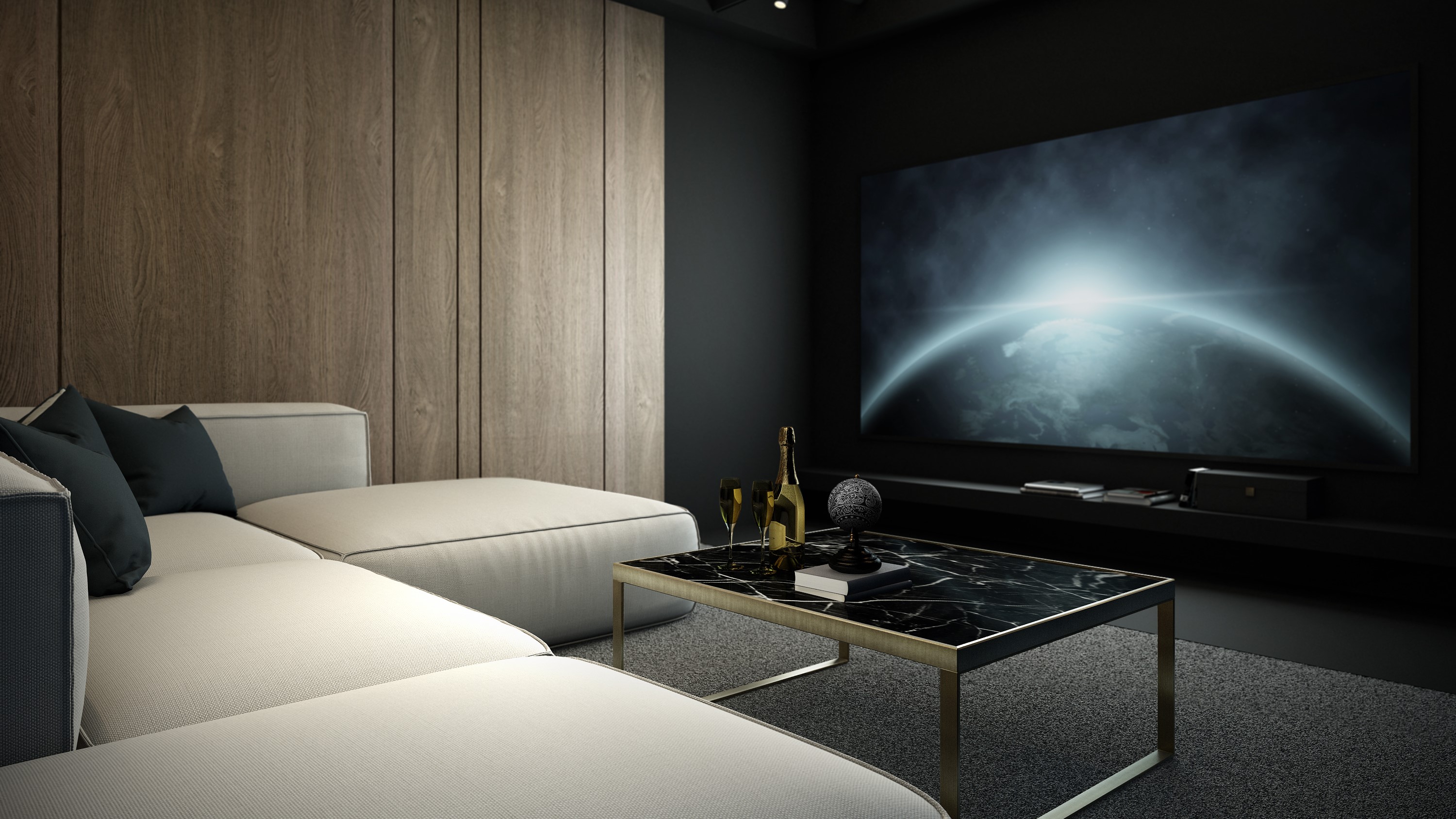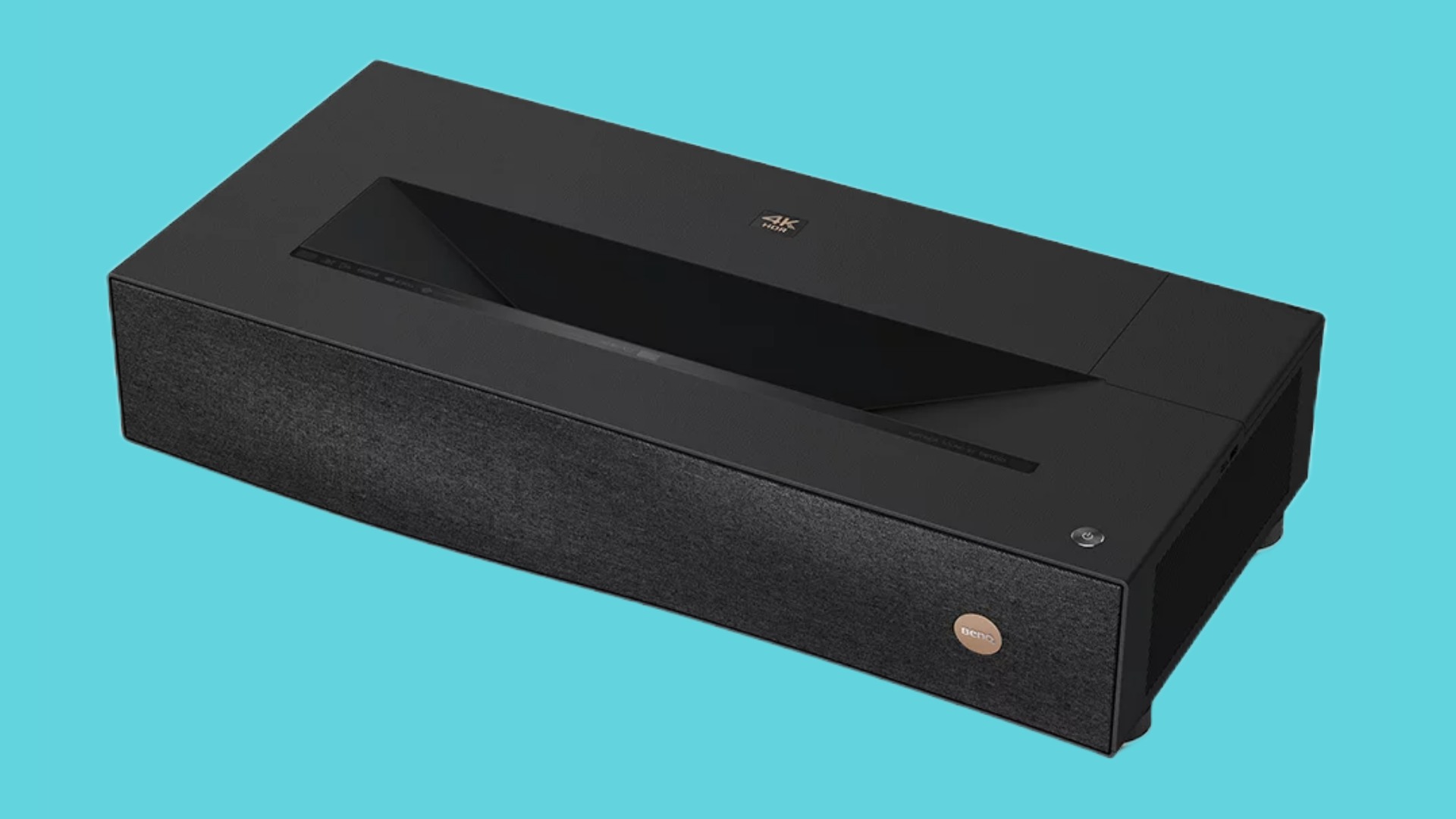I switched from a 65-inch TV to a 4K projector – and the results surprised me
Bigger really is better

Is it possible to have a screen that’s too big? For most people, a 65-inch TV would be considered ‘big-screen’, and they’d be perfectly happy viewing on an even smaller TV. For owners of the best 4K projectors, though, a 100-inch screen is the minimum entry point, with a 120-inch or even larger screen being an even better option for a full home theater experience.
My preference is for watching with projectors and for getting the biggest possible image. But I also usually have a consistent stream of the best 65-inch TVs cycling through my home – an occupational hazard of being a TV reviewer. And while I have a 100-inch projection screen in the same room where I test TVs, it’s been a while since I’ve had my hands on a new projector to review and have made do instead over the last few months with watching movies on a 65-inch screen.
I know you may be thinking, poor you, having to make do with only a 65-inch screen. But here’s the issue: at the 10-foot distance TVs typically sit from my couch, a 65-inch screen is actually on the small side for viewing 4K video. At that distance, the best 75-inch TVs would be a far better match to experience the full resolution level 4K Ultra HD provides.
Resolution here isn’t the only consideration. There’s also field of view, which is the range of visual information that your eyes can take in. For an optimal experience when viewing movies, THX recommends a 40-degree field of view, and at my 10-foot viewing distance, that would translate to a 100-inch screen. So while it’s possible for me to view with a smaller screen and still appreciate the benefits of 4K, the sense of visual immersion I’d normally get when viewing at a cinema would be lacking.

Projector to the rescue
Even though I’m well aware of the THX viewing distance guideline and also the SMPTE (Society of Motion Picture and Television Engineers) one, which is based on a less extreme 30 degrees field of view, I have recently become used to, even comfortable with, having 65-inch TVs for my main screen. You could say I adapted to it.
But that all changed when I recently switched out a 65-inch TV for a BenQ V5000i projector. The V5000i (review in the works) is a 4K ultra short throw model that uses a triple-laser DLP light engine and has a 2,500 ANSI lumens specified brightness. It’s designed to beam images as large as 100 inches – a perfect match for my projection screen.
After setting up the V5000i and settling back for some viewing, it was like I’d arrived home safe after a long trip. Its 100-inch image filled my screen and had an appealing crispness and rich color. The brightness and contrast weren’t as good as what I was getting with the TV – it rarely is with projectors – but the expanded field of view was more engaging, and also in many ways easier on the eyes.
Get daily insight, inspiration and deals in your inbox
Sign up for breaking news, reviews, opinion, top tech deals, and more.
I further realized that, after a few months of watching on a ‘small’ screen, the larger, more immersive picture with the projector was revealing details in movies and shows that I likely would have missed with my previous setup. For example, when watching the surreal reality TV show satire The Curse on Paramount Plus, I could easily read the labels of the products in the kitchen of the main actors and realized they were serving as a commentary on their lifestyle and character (organic chickpea pasta…).
Another example came with the Netflix original film May December. I recently heard a film critic comment in a podcast on the particular use of lighting in this movie, and watching it, I noted that its lighting did have a dappled, painterly effect, one likely used intentionally to place the story’s lurid, tabloid-inspired content at a level of remove. Same as with The Curse, this was an important detail I probably would have missed if I hadn’t been watching on a cinema-scale, 100-inch screen.
The bigger picture
I’m not trying to make a point here that a 65-inch screen is insufficient for appreciating movies. As mentioned above, most people would consider a TV that size to be ‘big-screen’ given the space that they normally watch in, and that’s a completely reasonable position.
What I am trying to say is that when viewing from an appropriate distance – 10 feet, in my case – the sense of visual immersion that a 100-inch (or larger) screen provides is very compelling, and it will make you more emotionally engaged with any movie you’re watching and more appreciative of the deliberate artistic choices made by a film’s director, cinematographer, art director, and visual effects wizards. And just think of what it would do with games.
This is something I already knew, but it took a reunion with a 4K projector to get a vivid reminder of how much they can enhance the experience of watching movies at home. Next time, I won’t wait so long before firing up the projector and rolling down the screen, and I will be all the better for it.
You might also like

Al Griffin has been writing about and reviewing A/V tech since the days LaserDiscs roamed the earth, and was previously the editor of Sound & Vision magazine.
When not reviewing the latest and greatest gear or watching movies at home, he can usually be found out and about on a bike.